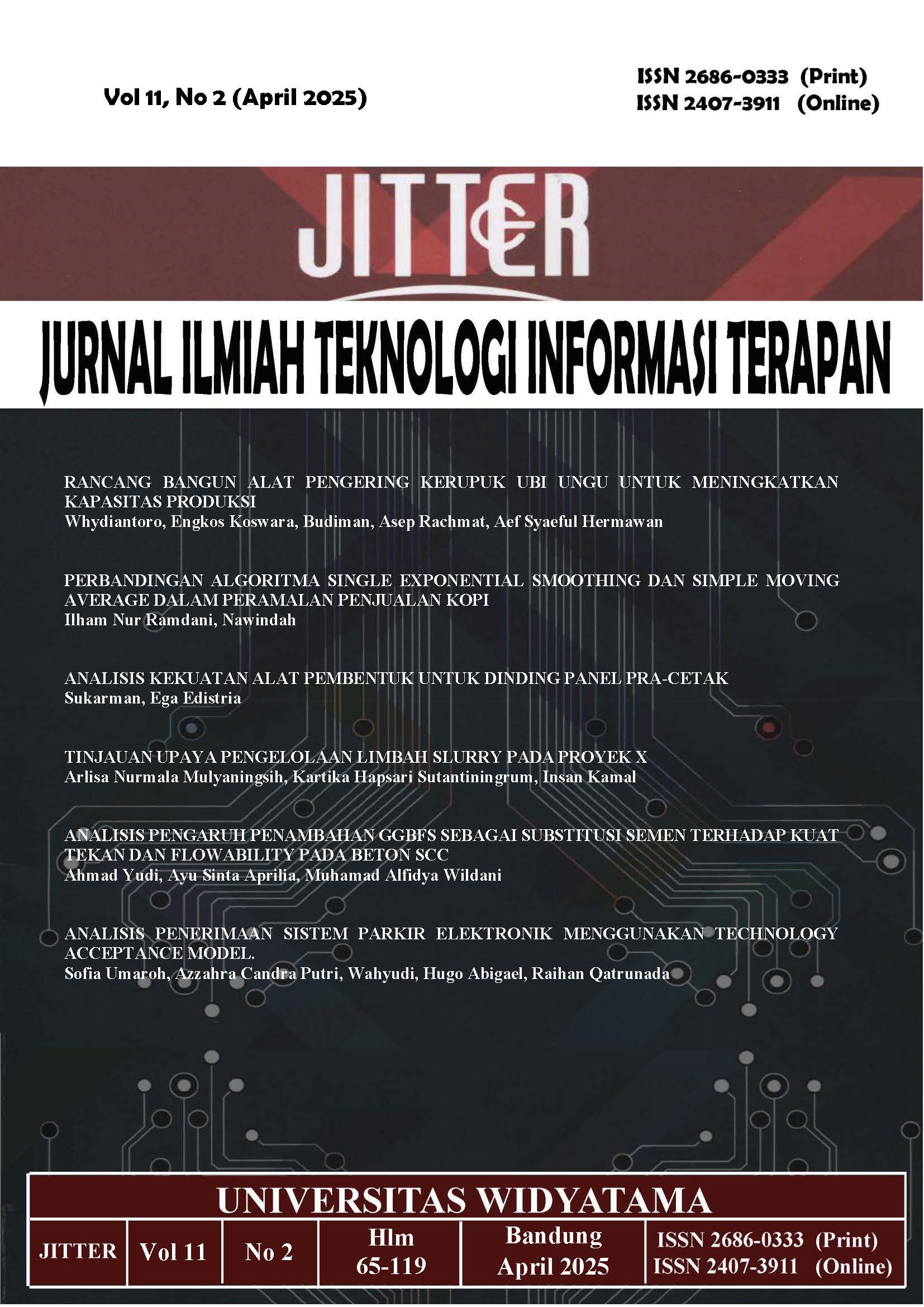ANALYSIS OF THE EFFECT OF ADDING GROUND GRANULATE BLAST FURNACE SLAG (GGBFS) AS A CEMENT SUBSTITUTION ON COMPRESSIVE STRENGTH AND FLOWABILITY IN SELF COMPACTING CONCRETE (SCC)
DOI:
https://doi.org/10.33197/jitter.vol11.iss2.2025.2497Keywords:
SCC, GGBFS, Compressive Strenght, Flowability, Passing AbilityAbstract
Self Compacting Concrete (SCC) is a modern concrete innovation that has the ability to flow and compact itself without the help of a vibration device. SCC concrete has almost the same composition as normal concrete, only the difference in the viscosity produced. The use of superplasticizer in SCC concrete is needed to improve the flowability of concrete without reducing the strength of the concrete. The purpose of this study is to analyze the influence resulting from the use of GGBFS as a cement substitution on the value of flowability, passing ability, and compressive strength applied to SCC concrete. The variation of GGBFS used was 0%; 5%; 10%; 15%; 20%; and 25% and the addition of a superplasticizer of 1.2% of the total weight of cement. The planned compressive strength is 40 MPa with the procedure for making concrete referring to SNI 7656 – 2012. The flowability and passing ability tests carried out are slump flow, L-box test, and V-funnel. The test results show that the use of GGBFS will affect the flowability and passing ability and increase the compressive strength as the GGBFS used increases. The maximum compressive strength occurred at a 20% GGBFS variation of 43.687 MPa.
Downloads
Downloads
Published
How to Cite
Issue
Section
License
Copyright (c) 2025 Muhamad Alfidya Wildani, Ahmad Yudi, Ayu Sinta Aprilia

This work is licensed under a Creative Commons Attribution-NonCommercial-ShareAlike 4.0 International License.
Submission of a manuscript implies that the submitted work has not been published before (except as part of a thesis or report, or abstract); that it is not under consideration for publication elsewhere; that its publication has been approved by all co-authors. If and when the manuscript is accepted for publication, the author(s) still hold the copyright and retain publishing rights without restrictions. Authors or others are allowed to multiply the article as long as not for commercial purposes. For the new invention, authors are suggested to manage its patent before published. The license type is CC-BY-SA 4.0.




.png)
.png)













.png)


